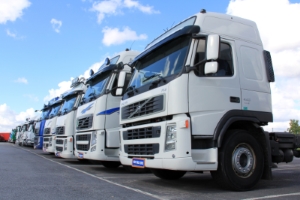Many articles and statements have circulated about the effects of the Corona virus on air quality, including from us (see article about NO2 pollution in China). We would like to think that air quality has vastly improved since our lives have been virtually stopped in their tracks, but, as always, reality is complex. Here are a few scientific facts for you.
Not all kinds of air pollution will decrease
The strong decrease in car and air traffic due to the Corona virus confinement does not necessarily entail as strong a decrease in air pollution. Air pollution consists of different kinds of pollutants: nitrogen dioxide, sulphur dioxide and particulate matter among others. These have varying sources, for instance, industrial processes, energy generation with coal-fired power stations, traffic or even agriculture. Some of these activities have not stopped or slowed down. We will always need to produce food.
Nitrogen dioxide should decrease

We do expect to see a decrease in nitrogen dioxide (NO2), because the main source of this pollutant in cities is car traffic. It also does not live very long in the air, and cannot be transported very far before it reacts away. However, the decrease won’t be that strong. NO2 is still being produced in large quantities, because there is one kind of traffic that has not ceased. The Flemish Traffic Centre reported roughly the same amount of trucks transporting cargo in Belgium (see article below). There was even an increase recorded on March 16, when people had started hoarding food, so it might be due to the need of extra deliveries to keep up with the demand.
The weather is important

Important to note is that meteorological processes play an important role in determining where pollution goes and how long it stays in the air. Think of smog alerts on hot sunny days, when a much ozone is produced because of chemical reactions activated by sunlight; or on cold winter days with little wind, when we consume a lot of energy for heating and the resulting pollution is not blown away.
Satellites are a complex technology

One more point to be made is that measurements and estimates with satellite instruments, like TROPOMI on board of the Sentinel-5P satellite, are not as straightforward as you would think. Scientists have to be very careful before making conclusions based on their satellite data (read this article about satellite observations during the lockdown from Copernicus for more information), and this can take time.
Valid conclusions take time

In any case, whether there is a worldwide epidemic or not, scientists are always monitoring the different types of air pollution, both locally and through remote sensing with satellites. Because of the complexity of all the processes mentioned above, it is important to average data on air quality over longer periods. This means that it might take a few months before we can provide a clearer answer about the effects of the confinement.
More information
- TROPOMI observes the impact of the corona virus on air quality in China
- Article about the Flemish Traffic Centre statistics (in Dutch)
- Flawed estimates of the effects of lockdown measures on air quality from satellite observations


